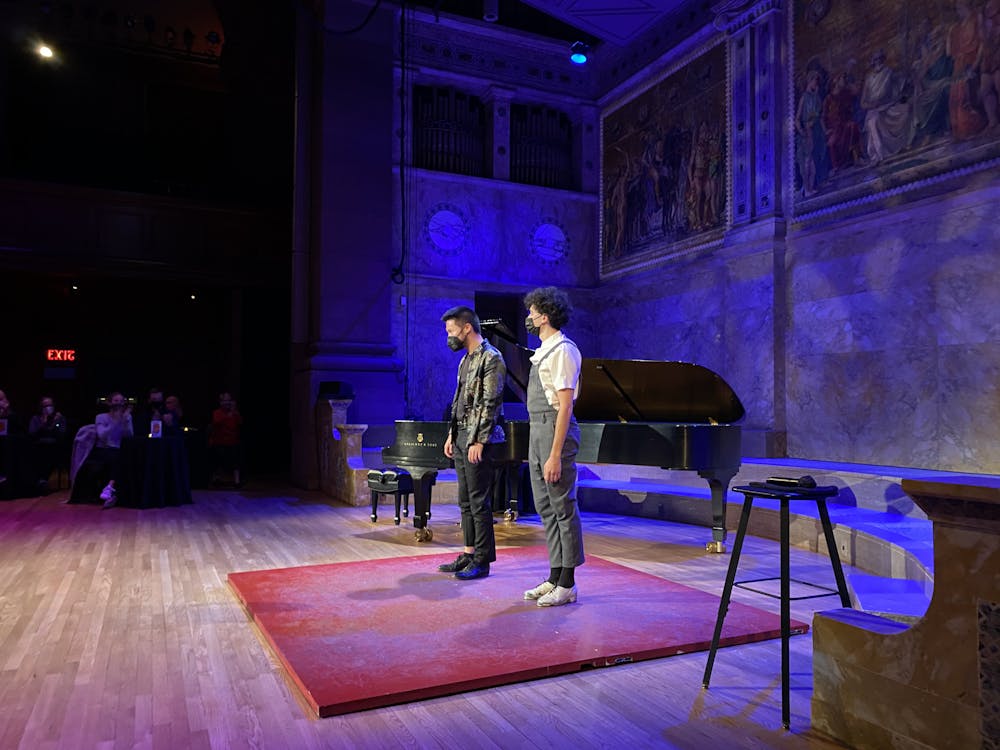There’s a scene from the 2014 anime “Your Lie in April” that I’ve always found awfully trite: In it, violinists are competing onstage in succession, playing Beethoven’s “Kreutzer Sonata.” The scene portrays the piece as banal, overplayed, and dull — your classic high school music competition! — until one of the show’s main characters, Kaori Miyazono, appears on stage.
Suddenly, the piece takes on a new character — the show seems to want you to believe that Kaori has presented the audience with something that sounds like an entirely different piece, flooring everybody with her ineffable genius. To create this effect, Kaori is shown playing a different part of the piece than the previous musicians, which has always come off as a bit contrived and somewhat deceptive to me.
In real life, this kind of transformative skill is incredibly hard to pull off. Its difficulty is why the show’s creators chose to go for cheap tactics in order to execute it. Conventional musical wisdom dictates that, at a fundamental level, pieces should sound the same, with some level of deference to the composer’s “intentions” (insofar as we can perceive them in the present day). As listeners of classical music, one of the fundamental skills we develop is recognizing pieces and developing expectations for what we “should” hear.
What an absolute joy it was to see those expectations demolished on Wednesday evening, when Conrad Tao, pianist, and Caleb Teicher, tap dancer, performed together in Richardson Hall through Princeton University Concerts. Tao’s and Teicher’s performance, titled “Counterpoints,” included an ad-hoc program announced from the stage of Bach, Brahms, Tatum, Gershwin, Tao, and others, blending genres, styles, and disciplines to create an inventive and rousing performance.
I doubt that I was alone in entering this concert with reservations. Piano and tap dance have rarely been juxtaposed in tandem during a concert as “formal” as this one, and I was prepared to express as much in this review after hearing the recital’s opener, the Aria from Bach’s “Goldberg Variations.” There was something very deliberately jarring about hearing a piece as crafted and iconic as that of the Aria take the background to Teicher’s choreography — to a certain extent, it seemed disruptive, and the sounds of Teicher’s dancing almost obscured the original Bach.
The miraculous thing about Tao’s and Teicher’s programming is that the two art forms of piano and tap dance, seemingly disparate, meld together over the program’s course. Teicher’s versatility as a dancer only increased as the pieces went on. They employed an ever-growing oeuvre of techniques, making use of the space afforded to them in its entirety, including clapping, knocking, and even moments of complete silence to punctuate meaningful stresses. In some pieces, the collaborative spirit between Tao and Teicher manifested in Teicher’s unrelenting rhythm filling in the beats and in the gaps that Tao deliberately leaves out.
For all of their interactive musical instincts, however, none of the program would have been possible without a sheer and overwhelming display of constant technical and musical virtuosity from both artists. Tao showcased just how comfortable he is playing pieces from periods that quite literally run the gamut from the 18th to the 21st centuries, with immaculate technique that lent a flowing airiness to the Bach and produced jaw-dropping clarity in the arrangement of Gershwin’s “Rhapsody in Blue.”
Meanwhile, throughout the program, Teicher presented tap dance like you’ve likely never seen it before: Just as there was the conventional-but-rousing flurry of movements, leading to an endless percussive storm in an arrangement of Art Tatum’s “Cherokee” and other such pieces, there were also moments of sublime and gripping slowness, when Teicher’s fluid movements seemed to pass through something thicker than air and nestled into the cadences between Tao’s immaculate phrasing.

This is the kind of music that overturns what you thought you knew about everything you’ve heard before. It makes you, sitting up on stage with the performers, think, “Jesus, what have I been listening to for my entire life?” Tao and Teicher have effectively pulled off the impossible in taking undisputed classics of the piano repertoire and reinventing them, in making it seem as if tap dance and piano were always inseparable.
Not all of these moments were perfect. There were times, especially in Brahms’ “Intermezzo in E major,” that Teicher’s movements bordered on being intrusive, obscuring the pillowy, above-the-heavens tone, at which Tao is a master. However, for each of these moments, there were so many more exceptional ones that I’d be hard-pressed to forget: Tao dropping magnets into the piano to create completely spontaneous tones over which he improvises like nobody else; Teicher alternatively singing and tap-dancing excerpts of Mozart’s “Rondo Alla Turca,” the vocality and rigorous percussion somehow unifying into a seamless musical line; the two performers exchanging syncopated phrases without missing a single beat in some of Gershwin’s most devilishly difficult passages.
When the program concluded, yet again with Bach’s “Aria,” the piece indeed felt completely different, transformed into something greater than the sum of its two parts, despite the fact that both remained entirely the same. Teicher’s movements remained distinct, and yet they seemed to contribute towards a contrapuntal structure that highlighted, in three dimensions, how Tao’s phrasing elevated the piece’s longer line: delicate sixteenth-note pickups here, expansive moments of arching stasis elsewhere.
The most wonderful aspect of this concert was, undoubtedly, the way in which the audience and the performers came to a mutual understanding without words, recognizing a union that would otherwise be unexpected and, to an extent, foreign. In Teicher’s own words, “By nature, [art] is interdisciplinary ... music is a dance form, too, although it’s hard ... to convince people of that.”

Aster Zhang is an Associate Editor for The Prospect who writes about music and food, often specific to the Princeton community. They can be reached at brentonz@princeton.edu, or on Twitter at @aster_zh.








